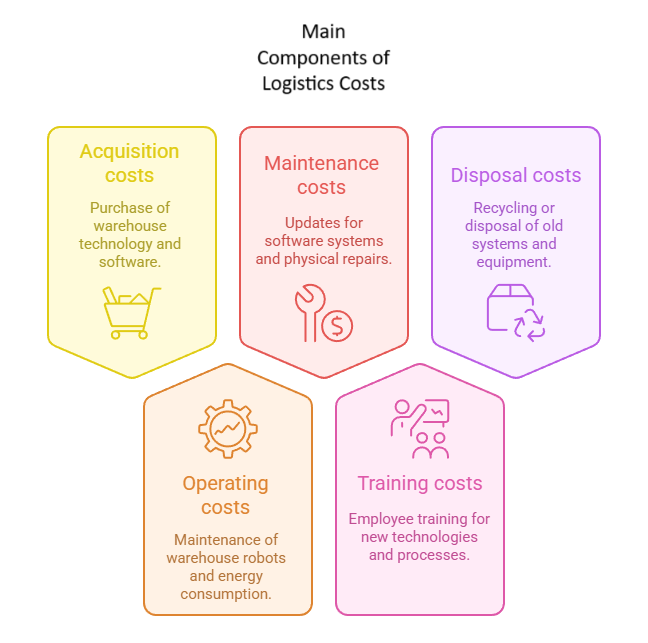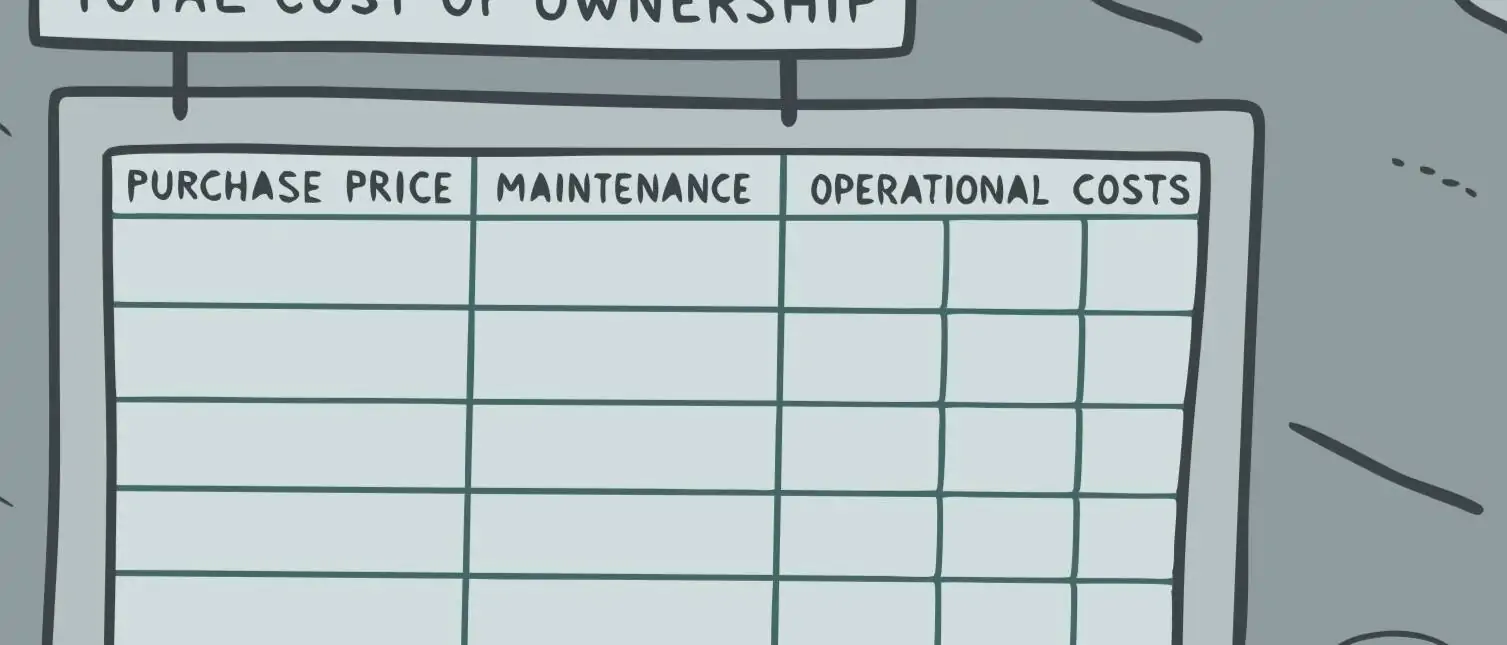The term total cost of ownership (TCO) describes the total costs of a product or service over its entire life cycle. This includes not only the acquisition costs, but also operating costs, maintenance, disposal, and indirect costs.
The TCO concept is particularly important in logistics, as companies not only have to invest in vehicles, warehouses, and IT systems, but also need to optimize long-term cost structures.
Historical development and concept
The concept of TCO originated in the field of procurement management and was popularized in the 1980s by IT companies such as Gartner. While it was initially applied to hardware and software, it later found application in the automotive, logistics, and manufacturing industries.
Today, TCO is used across industries to make decisions based on long-term economic efficiency.
Why is TCO particularly relevant in logistics?
The logistics industry faces numerous challenges: rising energy prices, increasing automation, and growing competitive pressure. Companies must design their entire supply chain to be cost-efficient in order to remain competitive.
Advantages of the TCO approach in logistics:
- Better investment decisions: It’s not just the purchase price that counts, but the long-term profitability.
- Optimization of operating costs: Efficient warehousing and transport systems can reduce costs in the long term.
- Digitization and automation: The use of warehouse management systems (WMS) reduces process costs.
The main components of total cost of ownership

The TCO analysis covers several types of costs:
- Acquisition costs
- Example in logistics: Purchase of warehouse technology, software (e.g., WMS)
- Operating costs
- Example in logistics: Maintenance of warehouse robots, energy costs
- Maintenance costs
- Example in logistics: Updates for software systems, repairs
- Training costs
- Example in logistics: Employee training for new technologies
- Disposal costs
- Example in logistics: Recycling or disposal of old systems
Direct vs. indirect costs within the model
A crucial aspect of calculating TCO is the distinction between direct and indirect costs:
- Direct costs: These are easy to measure, e.g., the acquisition costs of a forklift truck.
- Indirect costs: More difficult to quantify, e.g., productivity losses due to inefficient warehouse management.
An inefficient warehouse management system (WMS) can lead to long picking times, high error rates, and excess inventory—all of which significantly increase the TCO.
Methods of application and similar cost models
There are various approaches to dealing with the concept of TCO. The best known are:
- Break-even analysis: Comparison of the TCO of two alternatives over time.
- Modular TCO analysis: Detailed analysis of individual cost components.
TCO is an economic cost model. Compared to other popular cost models, it is characterized by its broad perspective and depth of detail. Some such models are listed below:
- Life Cycle Costing (LCC)
- Focuses on the entire life cycle, but is less detailed than TCO. LCC is limited to operating and acquisition costs and does not take transaction costs into account.
- Return on investment (ROI)
- Only considers the financial gain, not the long-term operating costs.
- Activity-based costing (ABC)
- Cost allocation based on activities; TCO is more comprehensive.
Practical examples of TCO in logistics
Example 1: Warehouse automation vs. manual processes
A company decides to implement an automated warehouse with WMS. The acquisition costs are high, but thanks to reduced error rates, lower personnel costs, and higher efficiency, the investment pays for itself within five years.
Example 2: Transport cost optimization
A freight forwarder analyzes the TCO of its vehicle fleet and finds that electric trucks are cheaper than diesel trucks in the long term, despite higher acquisition costs.
Strategies for reducing the total cost of ownership
Cost-cutting measures in the constituent cost areas have the effect of reducing the TCO as the sum of relevant costs.
- Use of modern WMS to reduce picking times.
- Investment in sustainable technologies (e.g., energy-efficient materials handling equipment).
- Process automation through robotics and AI.
The role of digitalization and automation
TCO should be viewed as an assumed, dynamic value. It can be influenced by the implementation of modern technologies.
- IoT & sensor technology: Real-time monitoring of inventory levels reduces stock shortages and thus lowers costs.
- AI & machine learning: Forecasts for replenishment and demand reduce unnecessary inventory costs.
- Warehouse management systems (WMS): Optimization of warehouse processes and reduction of operating costs.
- A modern WMS, such as TUP.WMS, can massively increase the efficiency of a warehouse system and help reduce your own TCO and that of other intralogistics components in the long term.
Challenges and criticism of the approach
Typical challenges include:
- Difficulty in obtaining data for a complete TCO analysis.
- Long-term forecasts are uncertain because technological developments are difficult to predict.
- High initial investments often deter companies, even though the long-term costs would be lower.
Sustainability and total cost of ownership
A sustainable logistics strategy reduces TCO in the long term:
- Use of renewable energies in warehouse operations.
- Reduction of packaging material and waste.
- Use of environmentally friendly transport solutions (e.g., hydrogen trucks).
Conclusion: Why every company should keep an eye on TCO
A holistic view of total cost of ownership helps companies identify hidden costs and operate more efficiently in the long term. The use of warehouse management systems plays a central role in optimizing processes and reducing operating costs.
Here you will find further articles on the topic of costs in intralogistics.
FAQs: Frequently asked questions about total cost of ownership
What is the main advantage of TCO?
TCO enables a holistic view of costs, not just the purchase price.
How does a WMS help reduce TCO?
A WMS optimizes warehouse processes, reduces errors, and lowers personnel costs.
Is TCO only relevant for large companies?
No, small and medium-sized enterprises (SMEs) also benefit from a TCO analysis.
